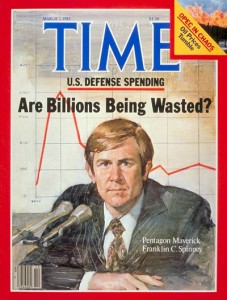![]() Scientific American’s list of 10 ideas about to change the world
Scientific American’s list of 10 ideas about to change the world
6. A single sustainability index for products
How do you compare the environmental impact of, say, a bottle of laundry detergent versus an LCD screen? The Sustainability Consortium, a group of 10 universities, non-profits and 80 international companies including Walmart and Coca-Cola, are creating an index that includes every step of the supply chain. The group has already released the measure it will use to evaluate its first 100 products.
Right now, a similar rating system, Good Guide, is based solely on public information. The new system would take into account “emissions, waste, labor practices, water usage and other sensitive factors that will become available only as large corporate players exert pressure on suppliers to disclose them,” says Scientific American.
Read full article with 9 Other Ideas
Continue reading “SmartPlanet: 1 Earth-Changing Idea, 9 Other Ideas”



